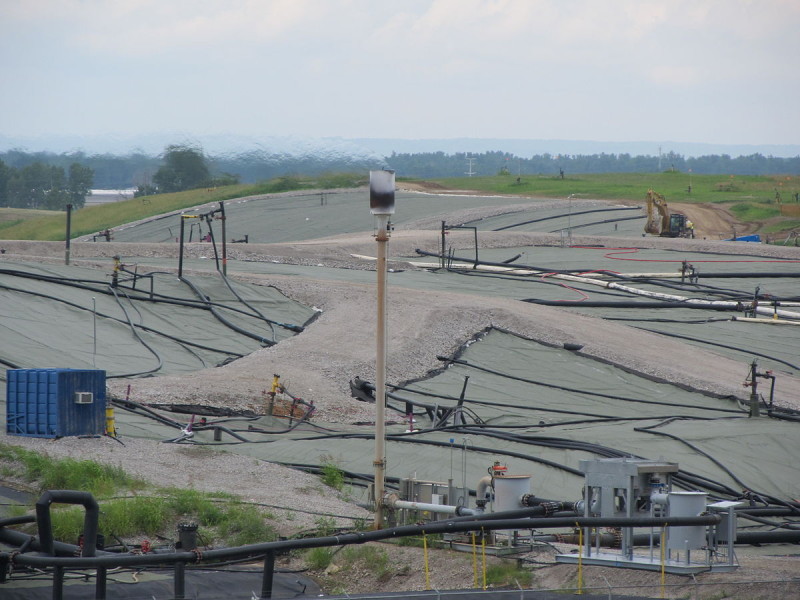ST. LOUIS – The Environmental Protection Agency (EPA) has released a new study regarding radiation at the West Lake Landfill, and groups on opposing sides of the issue are already debating the impact of its findings.
The landfill came to prominence last year when it was discovered that a subsurface event, or smoldering fire, was taking place underground. The site also harbors radiologically impacted material (RIM), specifically a byproduct from the creation of atomic bomb material from the early days of the Manhattan Project.
Residents in the surrounding area have been outspoken about the myriad health problems impacting the region, and state Sen. Maria Chappelle-Nadal, D-St. Louis, has filed legislation asking that the state buyout residents from the potentially hazardous area and made the issue a focal point of her campaign for congress.
The EPA’s new report found levels of radium and thorium that exceeded the EPA’s unrestricted use criteria across the southern portion of one waste disposal area. Those numbers were accompanied with increasing measurements of gamma radiation that could pose a danger to humans over a prolonged period of time. However, those dangerous levels were only detected well below the surface.
Attorney General Chris Koster is currently fighting a lawsuit against the owner of West Lake, Republic Services, for environmental violations and he believes the evidence in the data makes it clear that the EPA did not have a proper grasp on the situation.

“Today’s report confirms that EPA has never had a clear picture of the extent of contamination at the West Lake landfill, and it is deeply concerning that it took EPA so long to figure that out,” Koster said. “The new data places the radioactive waste hundreds of feet further south than previously known, closer to the still-burning underground fire. And the EPA has yet to reveal its plan for preventing the fire from ever reaching the waste. It is long past time for the federal government to transfer responsibility of the site to the Army Corps for swift and certain remedial action.”
However, Richard Callow, a spokesman for the neighboring Bridgeton Landfill, said the findings only confirm what Republic Services has known all along; that the RIM is not near the smoldering fire.
“This EPA report, which summarizes its investigation over the past two years, should once again give the community a better idea of where the RIM is and is not,” he said. “Additionally, EPA has determined that the RIM is not threatened by the underground smolder, which is neither moving into the north quarry nor into West Lake Landfill. And it has found no new risks to health. This all seems like a good and important step toward reaching a final decision by the end of year.”
Ed Smith, a spokesman for the Missouri Coalition for the Environment, disagreed.
“Without testing the entire area between the smoldering fire and the radioactive wastes, the EPA cannot say with any confidence the distance that separates these two problems,” Smith said. “We need the bipartisan federal legislation that will transfer the site to the Army Corps of Engineers to pass the House of Representatives immediately.”
The Army Corps of Engineers currently oversees control of other radiologically impacted areas in St. Louis including Coldwater Creek and the St. Louis Airport Site, which were also used as dumping grounds for radioactive materials.








